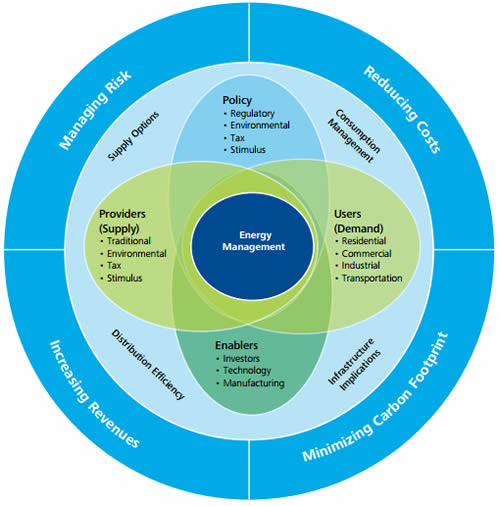Demand is supply:
The stealth revolution in energy
efficiency technologies
Companies have business strategies, risk strategies, strategies for growing markets, and for managing human resources, and so forth. But most companies do not yet have an energy strategy—let alone broader sustainability strategies to manage the use of water, land, and other resources. This is especially striking because—thanks to the advent of technology that revolutionizes how we manage energy consumption—every company is an energy company.

The headlines at the intersection of energy and technology have been dominated by solar, wind, biogas, tidal energy, and other renewable sources for most of the past decade. But two other, less-remarked-upon advancements probably matter more. One is taking place in the management of energy use, where improvements in efficiency could have a greater impact on the global energy picture than any other development. And the other is in the oil and gas industries, where new technology has brought massive new reserves into play.
The marriage of technology and energy is perhaps nowhere more important than in upgrading electricity infrastructure—and in particular the long-awaited “smart grid.” The gains in efficiency will likely be astounding once the grid is built out.
A picture of what’s possible is unfolding in South Korea, where a prototype grid is being developed in tandem with intelligently designed buildings. “Smart” buildings connect and communicate with the utility company via the smart grid, allowing customers to check the energy use of every socket and track electricity prices minute by minute. This allows them to automatically schedule the use of powerhungry appliances like dishwashers when electricity is cheapest. In fact, by modulating use, customers are not only able to consume cheaper, off-peak power, but they can sell power back to the utility that otherwise would have been lost—the meters in the prototype system run backwards. Customers with energy producing technologies like rooftop solar arrays or wind turbines also can sell their excess energy back to the power company.
Meanwhile, the smart grid allows South Korean utilities to chart energy use by house, by neighborhood, by time of day, by season—and thus to better plan how they will supply energy in the future. In leaping ahead with its prototype grid, South Korea is aiming at its own virtuous cycle of innovation, one that not only will allow it to combine smart technology and green energy into one ecosystem, but also one that will allow it to spawn new companies that export the system worldwide.

Energy is an asset that should be strategically managed to create economic value for business enterprises.
Innovations can be elegantly simple as well: Opower gives electric and gas companies tools to communicate with customers, like text-messaging them mid-month if their electric bill is running particularly high.>>>
[ 1 ] [ 2 ] [ 3 ] [ 4 ] [ 5 ] [ 6 ] [ 7 ] [ 8 ] [ 9 ] [ 10 ] |

